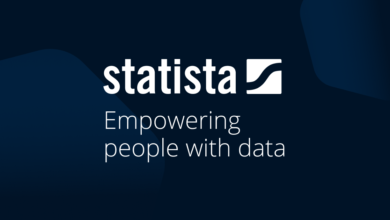Where AI makes a difference for the telecoms industry (Reader Forum)

Generative AI (GenAI) is a breathtaking technology feat that could substantially impact society and the economy. The business adoption rate will determine the extent of that impact and how quickly people adapt to working in new ways.
The role of Artificial Intelligence is growing steadily in the Telecommunications industry. The sector embraces AI to improve customer experiences, automate processes, increase productivity and refine network operations.
Enhancing customer experiences is the most significant opportunity, with AI as a critical driver for improving revenues and cost savings. However, a considerable challenge to adopting and implementing AI is the need for more skilled labor. Hybrid hosting for AI is preferred, but cloud hosting is growing. A strategic approach to choosing the platform for running AI workloads is becoming increasingly important. Partnerships are critical for the adoption of AI solutions in the industry, and co-development with partners has been identified as the preferred approach to developing AI solutions.
AI investments are growing, with a focus on infrastructure and models, but they still need to be higher. There has been a steady increase in AI investments, with a rise in respondents reporting investments of over $1 million.
Every technology experiences growing pains, and GenAI is no exception. Misdirected investments in 2023 left the corporate landscape littered with projects that failed to deliver tangible value. In the telco sector, efforts often focused on chatbots, code pilots, customer care and sales and marketing content.
But by applying AI to network infrastructure, telcos can find the high-impact ROI they’re looking for across the network lifecycle.
We cover AI’s potential for building autonomous self-healing networks and identify six areas of AI intervention that show the most significant promise.
- Network optimization — Artificial intelligence has the potential to revolutionize the telecommunications industry by providing real-time analysis of network performance and optimizing network parameters. AI’s simulation-based approach allows communication service providers (CSPs) to evaluate and compare different network configurations, providing valuable insights into creating self-organizing networks optimized for maximum efficiency and performance. With AI’s help, CSPs can continually fine-tune their networks to ensure that they are continuously operating at their best and delivering the best possible experience to their customers.
- Network verification — With GenAI, network verification models can be employed at the helm of network monitoring to ensure optimal network performance. Rather than simply detecting patterns that suggest network failure, AI can also oversee network behavior. The technique known as traffic engineering allows AI to analyze and predict network traffic patterns to optimize data routing and minimize congestion. Network verification aims to establish a self-healing network that consistently stays online and functions as intended. By adopting these strategies, AI-powered network monitoring can effectively manage network behavior and lead to a more resilient and reliable network.
- Network security — Communications Service Providers (CSPs) are particularly vulnerable to cyberattacks since each network component is individually accessible over IP. This means a single vulnerability can lead to a significant breach that could endanger sensitive data and disrupt critical services. However, GenAI can enhance network security by constantly monitoring traffic and identifying potential cyber threats in real time. By detecting suspicious activity and responding instantly, AI-powered security systems can help CSPs prevent attacks before they cause harm.
- Predictive analytics — GenAI can analyze the historical performance data of every cell tower within the vast network of operators. This analysis helps AI create predictive models that can forecast potential issues that might arise in the network. By identifying these issues before they happen, operators can take preventive measures to ensure a more reliable and efficient network. This cutting-edge technological advancement is a game-changer for the operators, enabling them to stay ahead of the curve and provide their customers with top-notch service.
- Dynamic network slicing — Advanced AI algorithms have revolutionized how 5G services are provisioned to numerous simultaneous demands. These algorithms dynamically analyze different network slices’ usage patterns and load levels to optimize performance and deliver a seamless user experience. This enables the network to allocate resources in real-time, ensuring that users have access to the services they need, when they need them, without any disruption or delay.
- Energy efficient networks — Commitment to net zero will be a topic of top significance in many corporate boardrooms. 5G uses less energy per bit of data than 4G, but the massive increase in data volume means 5G’s energy footprint is significantly larger. As a result, telecommunication companies face social, regulatory, brand and cost pressure to optimize energy consumption. Intelligent energy management systems use advanced AI algorithms to monitor and optimize the energy consumption of network infrastructure. These systems dynamically adjust power usage based on demand, ensuring energy is used efficiently and effectively. By analyzing real-time data and making intelligent decisions, these systems can help reduce energy waste and lower costs for businesses and organizations. With intelligent energy management systems, companies can take a proactive approach to energy management and positively impact the environment.
The telecom industry is recognizing the deepening role of AI in driving technological innovation, creating new products and services and improving operational excellence. GenAI is poised to become an integral part of the technological and investment roadmap for the telecom industry, enabling it to deliver connectivity sustainably and efficiently for communication and online services worldwide.



